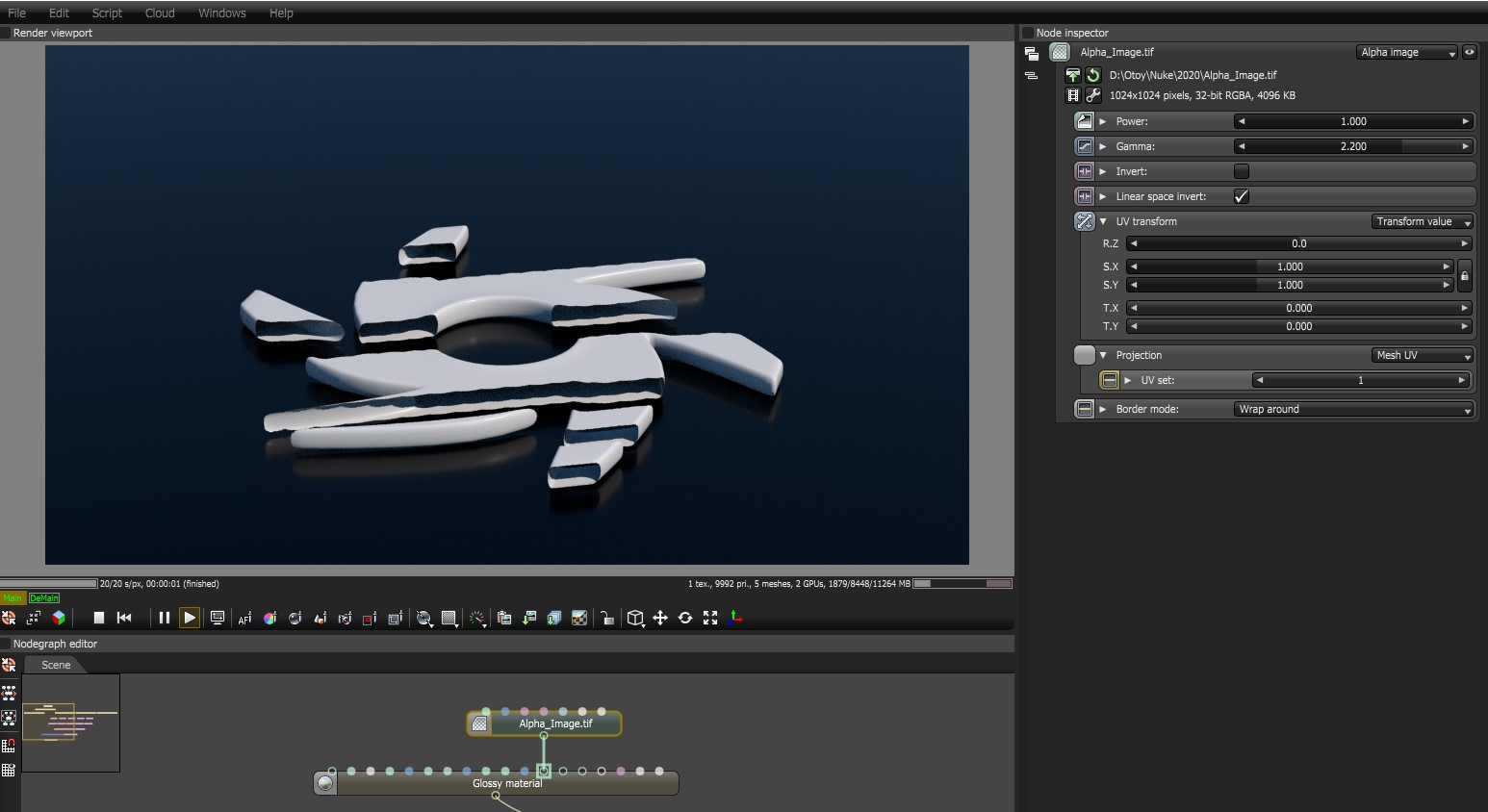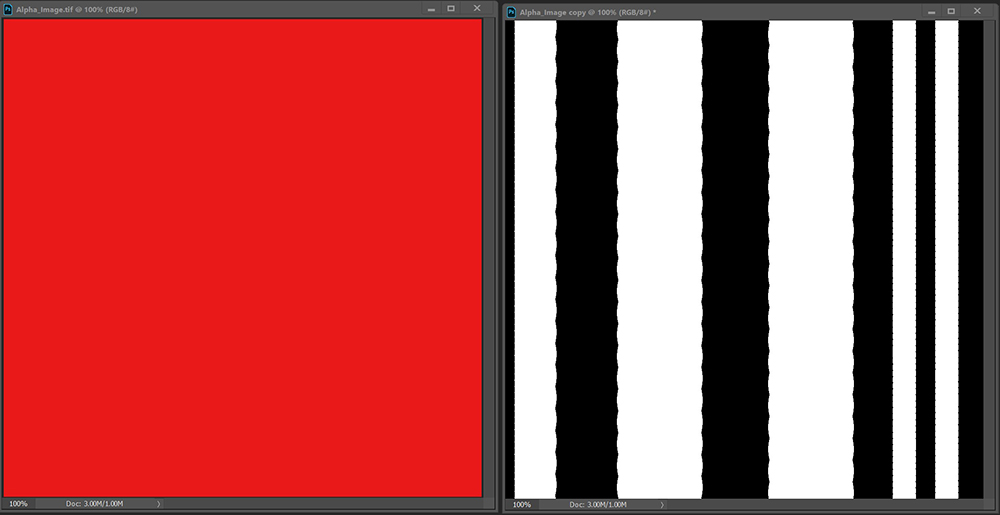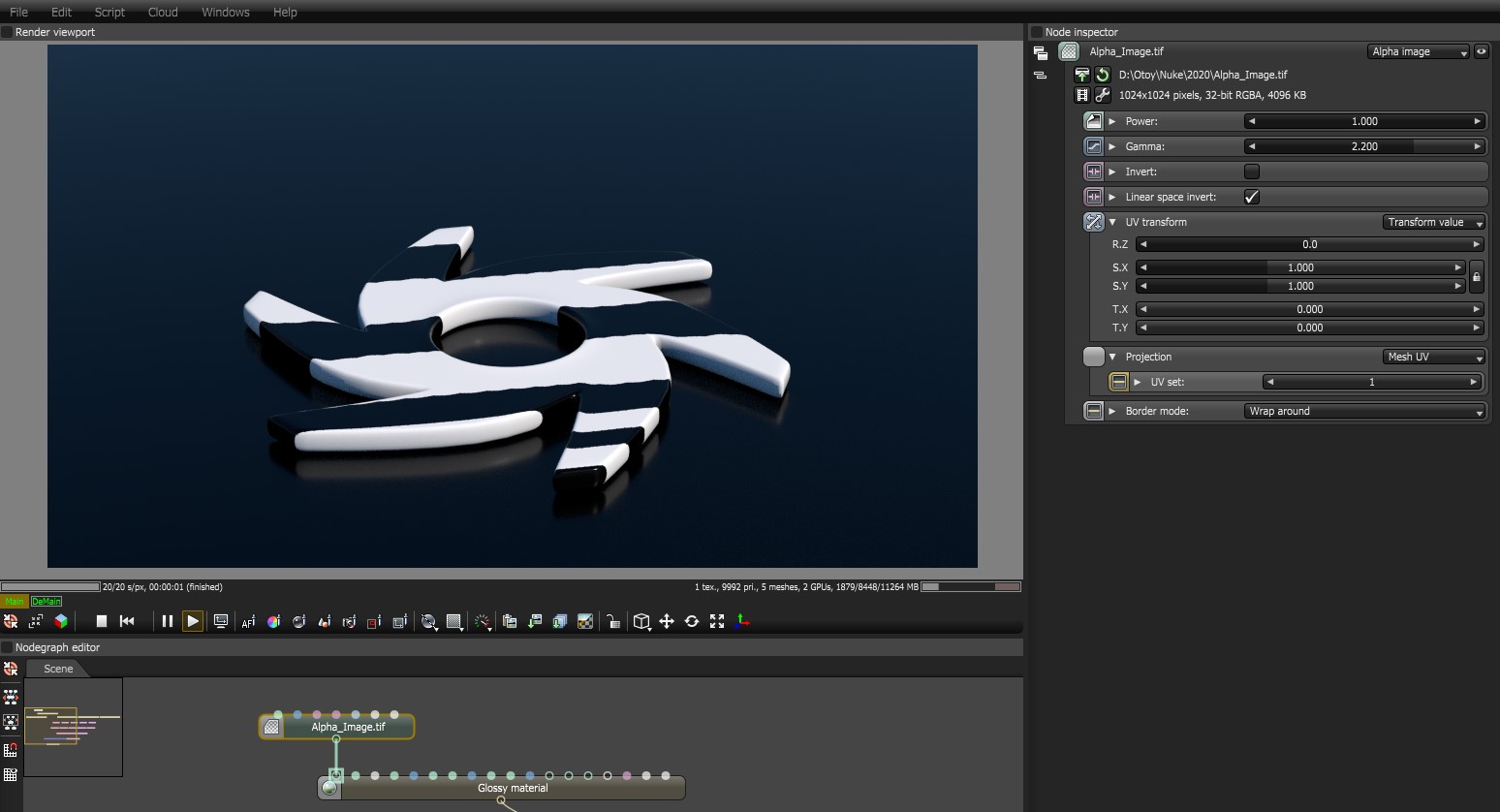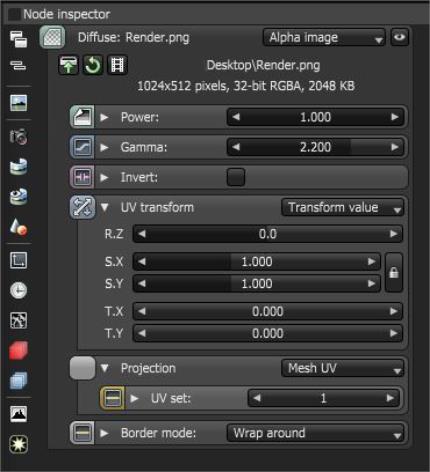
The Alpha Image texture utilizes the image's native alpha channel to provide transparency. This texture only accepts PNG, TIF, and EXRAlso known as OpenEXR. This image file format was developed by Industrial Light & Magic and provides a High Dynamic Range image capable of storing deep image data on a frame-by-frame basis. images. It will ignore any information contained in the RGB channels for the texture map and output only the alpha information (Figure 1).

Figure 1: An Alpha Image node used to mask away parts of a Glossy materialUsed for shiny materials such as plastics or metals. by connecting the Alpha Image node to the Opacity input.

Figure 2: The Alpha Image texture map's RGB infomation on the left and the alpha information on the right.
The same alpha image texture map can be used for other inputs on a material. However, it will only output the alpha channel information (Figure 3).

Figure 3: The Alpha Image node connected to the DiffuseAmount of diffusion, or the reflection of light photons at different angles from an uneven or granular surface. Used for dull, non-reflecting materials or mesh emitters. input on a GlossyThe measure of how well light is reflected from a surface in the specular direction, the amount and way in which the light is spread around the specular direction, and the change in specular reflection as the specular angle changes. Used for shiny materials such as plastics or metals. material.

Figure 4: The Alpha Image parameters
Alpha Image Parameters
Power - Controls image brightness. Lowering the value makes the image look darker.
GammaThe function or attribute used to code or decode luminance for common displays. The computer graphics industry has set a standard gamma setting of 2.2 making it the most common default for 3D modelling and rendering applications. - Controls input image luminance, and tunes or color-corrects images if needed.
Invert - Inverts the texture values.
UV Transform - Positions, rotates, and scales the surface texture.
Projection - Accepts OctaneRender® Projection nodes. If nothing is connected to this input, the Image texture uses the surface's UV texture coordinates by default. This also changes the UV set if the original surface contains more than one UV set. For more details, see the Octane Projections topic in this manual.
Border Mode - Sets the behavior of the space around the image if it doesn't cover the entire geometry. Wrap Around is the default behavior, which repeats the image in the areas outside the image's coverage. If you set this parameter to White Color or Black Color, the area outside the image turns to white or black, respectively.